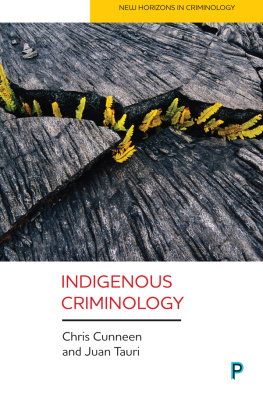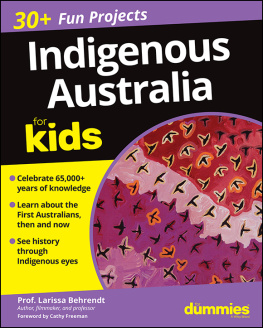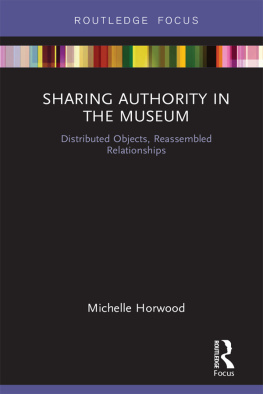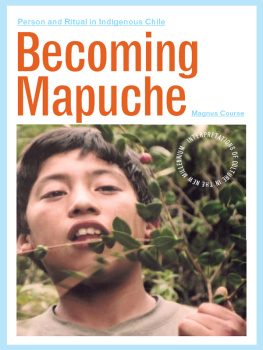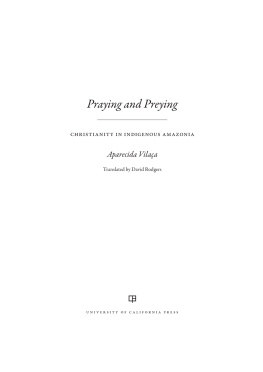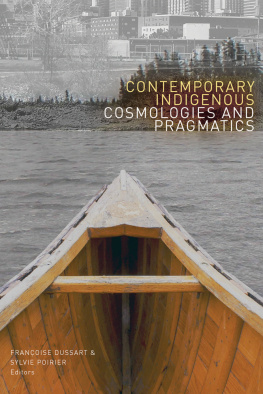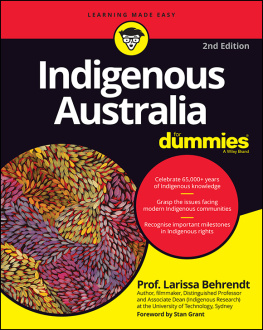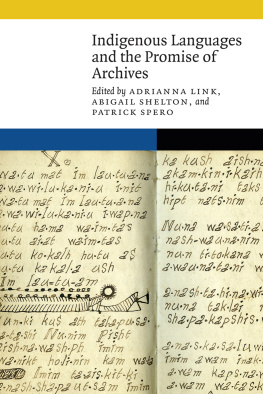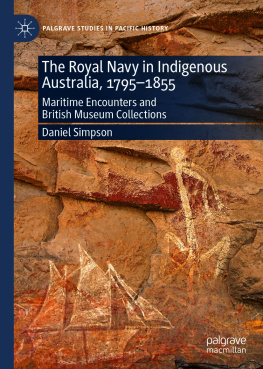Front Cover Image: Tim Leura Tjapaltjarri/Peltharr (1972) Emu Ceremonial Dreaming. Powder pigment on composition board, 91.5 60.5 cm. Private Collection. Estate of the artist licensed by Aboriginal Artists Agency Ltd.
Published by State University of New York Press, Albany
2020 State University of New York
All rights reserved
Printed in the United States of America
No part of this book may be used or reproduced in any manner without written permission. No part of this book may be stored in a retrieval system or transmitted in any form or by any means including electronic, electrostatic, magnetic tape, mechanical, photocopying, recording, or otherwise without the prior permission in writing of the publisher.
For information, contact State University of New York Press, Albany, NY
www.sunypress.edu
Library of Congress Cataloging-in-Publication Data
Names: Gibson, Jason M., author.
Title: Ceremony men : making ethnography and the return of the Strehlow collection / Jason M. Gibson.
Description: Albany : State University of New York Press, 2020. | Series: SUNY series, tribal worlds: critical studies in American Indian nation building | Includes bibliographical references and index.
Identifiers: LCCN 2019036180 | ISBN 9781438478555 (hardcover : alk. paper) | ISBN 9781438478562 (ebook)
Subjects: LCSH: Aboriginal AustraliansAntiquitiesCollection and preservation. | AustraliaAntiquitiesCollection and preservation. | ArchaeologyMoral and ethical aspectsAustralia. | EthnologyAustralia. | Strehlow, T. G. H. (Theodor George Henry), 19081978. | Strehlow Research Centre.
Classification: LCC GN666 .G57 2020 | DDC 305.800994dc23
LC record available at https://lccn.loc.gov/2019036180
10 9 8 7 6 5 4 3 2 1
In honor of
all of the ceremony menAcknowledgments
This book is the culmination of a decade of my life, and I am indebted to many people who helped me along the way. Naturally, I lay claim to all the weaknesses (as well as the strengths!) remaining in the work but must thank all those who provided me with important intellectual, emotional, and material support.
I am, of course, forever indebted to the many Anmatyerr and Arrernte people who have spoken with me over the years. There have been so many that it would be very hard to name them all, but my closest friends and acquaintances and those who agreed to be recorded deserve special mention: Eric Penangk, Ken Tilmouth Penangk, Jimmy Haines Ngwarray, Paddy Kemarr Willis, Laurie Arwengalker Ngal, Harold Papelaw Payne, Andrew Glenn, James Glenn, Rodney Cook Mpetyan, Ronnie McNamara, Huckitta Lynch, Lesley Stafford, Ray Nelson Penangk, Clem Peltharr, Mick Turner Ngal, Tony Scrutton Ngwarray, Sebastian Walker Jupurrula, Bentley Brown, Bruce Brown, Kieran Haines, Alyepe Martin McMillan Kemarr, Tywelam, Ronnie Ross Arempeyareny Penangk, Stuart Petersen, Nathaniel Dixon Ngwarray, Johnny Dixon Peltharr, Martin Hagan, Cindy Presley Penangk, Samantha Greenwood Ngwarray, and April Campbell Pengart. Many of you are friends, and I hope this book can do something to convey my respect. Malcolm Heffernan Pengart was particularly important to the making of this book. I cannot thank him enough for his patient tuition in Anmatyerr language and his gentle instruction in Anmatyerr and Arrernte lifeworlds. Malcolm participated in this research more than anyone else, joining me on fieldwork trips, engaging in archival work, and introducing me to new people across the region.
I am also thankful to many of the staff who have worked at the Strehlow Research Centre over the past ten years, in particular, Adam Macfie, Michael Cawthorn, Graeme Shaughnessy, Felicity Green, and Mark Inkamala. I also acknowledge the trust placed in me by the Strehlow Board to conduct this work responsibly and with respect to the cultural restrictions placed on much of the material. Shaun Angeles, the present-day Arrernte researcher at the Centre, joined me one some of my journeys to Anmatyerr country, but our conversations began many years earlier during a hunting trip to Arewengkwerte (Yambah Station). Back then we had absolutely no idea that we would one day share a deep passion for the Strehlow collection. He has been an important sounding board over the years.
This research has also benefitted from invaluable linguistic advice from a number of Arandic language specialists. Jennifer Green was extraordinarily generous with her time, and her long association with Anmatyerr people and her knowledge of the language was extremely helpful along the way. David Moore, Mary Flynn, David Strickland, Gavan Breen, Barry McDonald, and Myfany Turpin also fielded my various enquiries, and Paul Albrecht and Gary Stoll, too, each in his own way, gave useful insights and important historical background.
This book has been enriched through a rigorous process of peer review. John Bradley, Rachel Standfield, and Liam Brady at Monash Universitys Indigenous Studies Centre first guided me through this work during its dissertation stage, whereas Fred Myers and Howard Morphy offered tremendous support in getting this work into publication. I also feel particularly fortunate to have benefitted from correspondence with a range of scholars, including Anna Kenny, Luise Hercus, Charley Ward, Dianne Austin-Broos, and Philip Batty. Richard Gillespie at Museum Victoria, Helen Gardner at Deakin University, and Jane Lydon at the University of Western Australia also offered crucial support and inspiration at various stages. Special thanks are also due to John Kean and Lucas Jordan for their camaraderie in the trials of fieldwork, adventuring, and writing. Lucas was a particularly important companion during my early years on Anmatyerr country, and John not only shared his memories of the Anmatyerr men he knew in the 1970s and 1980s but endured earlier drafts.
Writing and research can be a lonely process, and I am fortunate to have had the support of a wide circle of friends and family. Catherine Nano made her home in Alice Springs open to me whenever I visited central Australia, and Therese Smith was an important reader and editor of the manuscript in its penultimate stage. Most of all, though, Ada Nano, gave her unconditional support over many years. I am forever grateful for her patience with me and my very particular research obsessions. Our son, Arthur Gibson, was also very understanding of his fathers seemingly endless work on chapters during the early years of his life. Finally, without the wonderful parenting of Peter and Maree Gibson, who taught me the value of listening and learning from others, I would never have had the opportunity or self-belief to venture into the world of scholarly writing.
I thank you all.
Note on Cover Art
The cover of this book features Emu Ceremonial Dreaming (1972), an acrylic painting by the Anmatyerr artist Tim Leura Peltharr. The painting was chosen after consultation with Anmatyerr men who agreed the image represented the key themes of the book. At the center of the image is a ceremonial performer representing an Emu father who assists male initiates into manhood. On his chest is a black circle denoting the place from which the emus distinctive, deep drumming sound is made; the black mark on his forehead represents the emus beak. The shield carried across the back of the performer would normally carry a personal totemic design, while the surrounding painted boards represent groups of ceremony men coming together to share their ceremonial knowledge.


